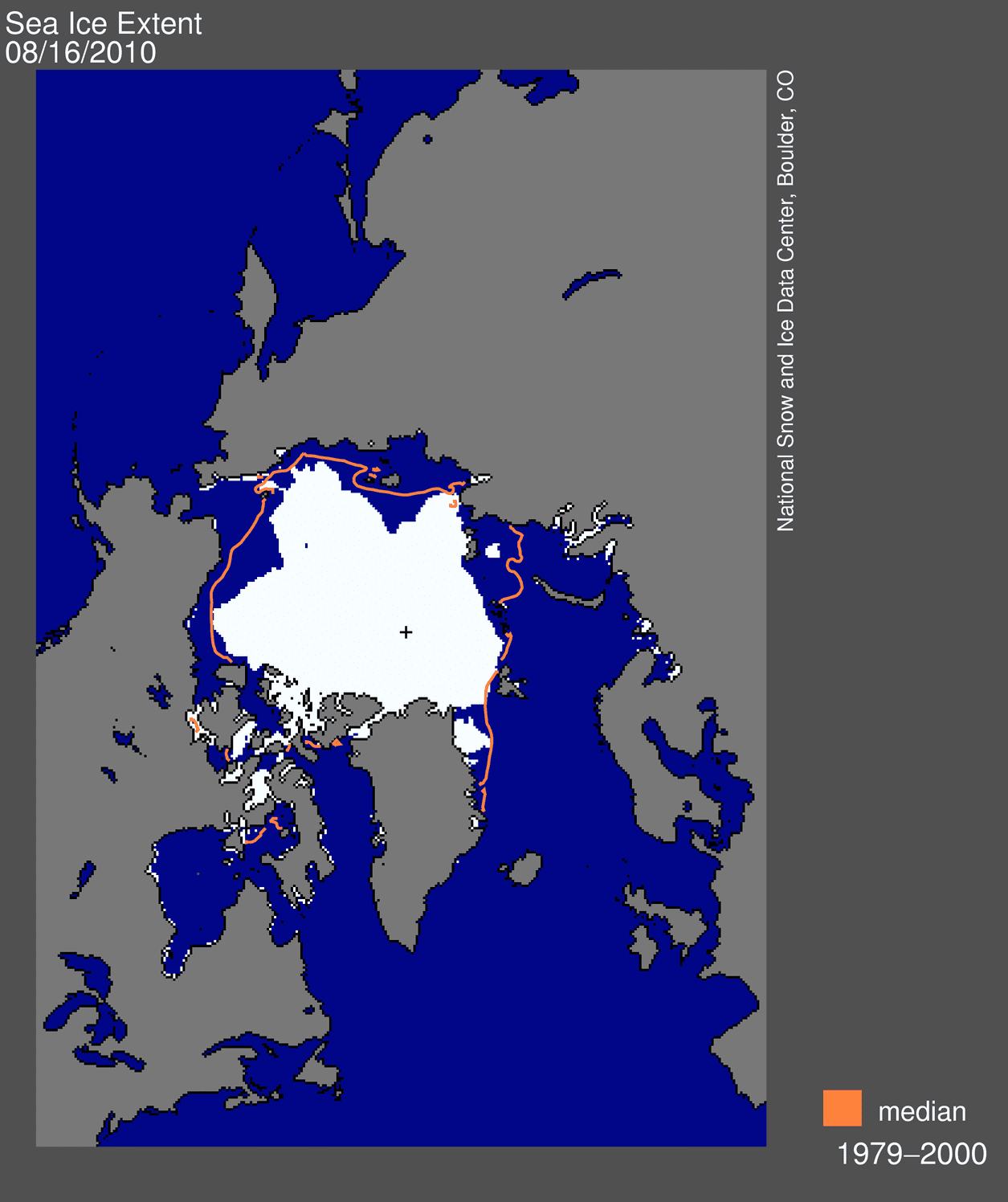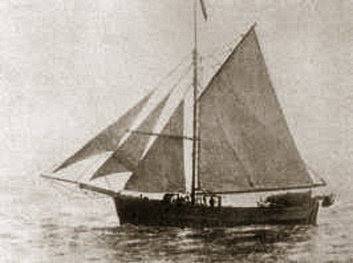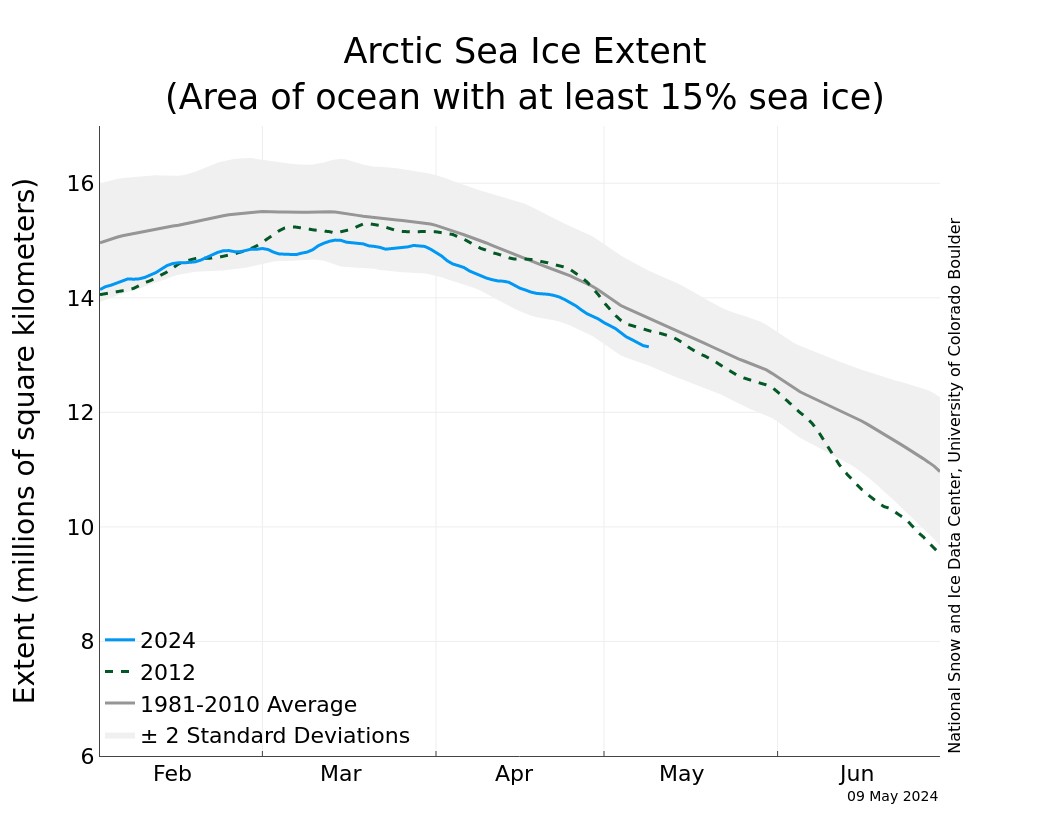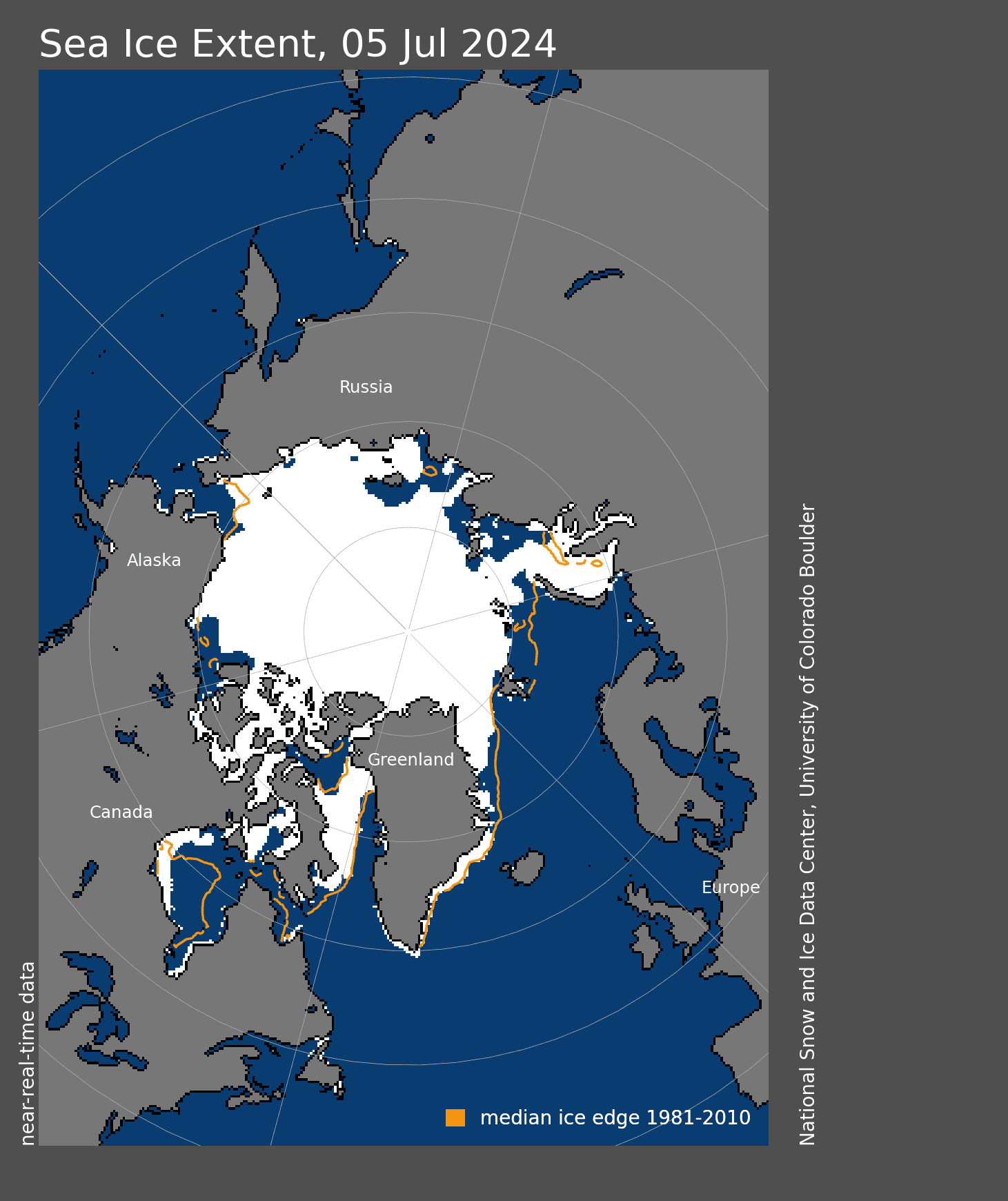As of August 16, 2010, Arctic ice extent was 5.95 million square kilometers (2.30 million square miles),1.68 million square kilometers (649,000 square miles) below the 1979 to 2000 average.
Arctic Sea Ice News & Analysis
Arctic Sea Ice News & Analysis





